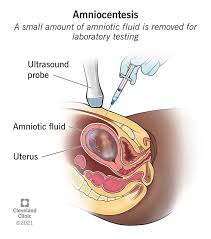A nurse is assessing a client who is 3 days postpartum and is breastfeeding. The nurse notes that the fundus is three fingerbreadths below the umbilicus, lochia rubra is moderate, and the breasts are hard and warm to palpation. Which of the following interpretations of these findings should the nurse make?
The client is exhibiting early indications of mastitis.
Additional interventions are not indicated at this time.
The client should be advised to remove her nursing bra.
Application of a heating pad to the breasts is indicated.
The Correct Answer is B
Choice a reason:
Mastitis is an infection of the breast tissue that results in pain, swelling, warmth, and redness. The symptoms of mastitis typically include breast tenderness, redness on the skin, breast pain, and sometimes fever and malaise. While the client's breasts are described as hard and warm, which could be associated with mastitis, the absence of other key symptoms such as fever or flu-like symptoms suggests that mastitis may not be the issue here.
Choice b reason:
Three days postpartum, it is normal for the fundus to be below the umbilicus and for lochia rubra to be present. The hardness and warmth of the breasts could be due to milk coming in, which is also a normal postpartum change. Without additional symptoms of concern, such as fever, severe pain, or signs of infection, it is reasonable to conclude that no additional interventions are required at this time.
Choice c reason:
Removing a nursing bra can provide comfort, especially if it is too tight and contributing to breast engorgement or clogged ducts. However, there is no indication that the client's nursing bra is causing an issue. Nursing bras are designed to support the breasts during breastfeeding and typically do not need to be removed unless they are causing specific problems.
Choice d reason:
Applying a heating pad can help with milk let-down and relieve discomfort from engorgement or clogged ducts. However, since the client is not exhibiting signs of mastitis or severe engorgement, and the warmth of the breasts may be due to normal postpartum changes, the application of a heating pad is not necessarily indicated at this time.
Nursing Test Bank
Naxlex Comprehensive Predictor Exams
Related Questions
Correct Answer is D
Explanation
Choice a reason:
While ultrasound can be used for estimating fetal age, at 36 weeks of gestation, this is not the primary reason for performing an ultrasound before an amniocentesis. Fetal age is usually estimated earlier in the pregnancy to help with dating the pregnancy and determining the due date.
Choice b reason:
Determining if there is more than one fetus is typically established earlier in the pregnancy. By 36 weeks, the presence of multiples would already be known, so this would not be the primary reason for an ultrasound before an amniocentesis at this stage.
Choice c reason:
An ultrasound can be used as a screening tool for spina bifida, but it is not the main reason for an ultrasound before an amniocentesis at 36 weeks. Screening for spina bifida and other anomalies is usually done during the second trimester.
Choice d reason:
The primary reason for an ultrasound before an amniocentesis is to identify the location of the placenta and fetus. This information is crucial to ensure the safety of both the mother and the fetus during the procedure by avoiding injury to the placenta and ensuring the amniotic needle is inserted in a safe location.

Correct Answer is C
Explanation
Choice a reason:
Slightly below the umbilicus is not the expected location for the fundus at 22 weeks of gestation. Typically, the fundus is located at the level of the umbilicus at 20 weeks and rises about 1 cm above the umbilicus each week thereafter.
Choice b reason:
3 cm above the umbilicus would be more consistent with a gestational age of approximately 23 weeks, as the fundus rises approximately 1 cm per week after reaching the level of the umbilicus at 20 weeks.
Choice C rationale: At 22 weeks of gestation, the fundus is typically located slightly above the umbilicus. The uterus has grown sufficiently by this stage to reach this position, aligning with the expected fundal height measurements. This corresponds with normal pregnancy progression, as fundal height in centimeters is expected to approximate the gestational age in weeks.
Choice D rationale: By 22 weeks of gestation, the fundus has already risen above the umbilicus, so palpating the fundus 3 cm below the umbilicus is inconsistent with normal pregnancy progression. Earlier in pregnancy, such as around 16 to 18 weeks, the fundus might be found below the umbilicus, but this does not apply at 22 weeks.
Whether you are a student looking to ace your exams or a practicing nurse seeking to enhance your expertise , our nursing education contents will empower you with the confidence and competence to make a difference in the lives of patients and become a respected leader in the healthcare field.
Visit Naxlex, invest in your future and unlock endless possibilities with our unparalleled nursing education contents today
Report Wrong Answer on the Current Question
Do you disagree with the answer? If yes, what is your expected answer? Explain.
Kindly be descriptive with the issue you are facing.
